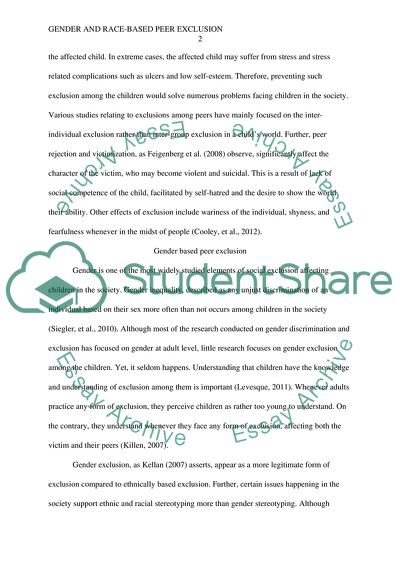Cite this document
(Childrens Moral Reasoning About Gender and Race-Based Peer Exclusion Essay Example | Topics and Well Written Essays - 2250 words, n.d.)
Childrens Moral Reasoning About Gender and Race-Based Peer Exclusion Essay Example | Topics and Well Written Essays - 2250 words. https://studentshare.org/psychology/1808474-discuss-childrens-moral-reasoning-about-gender-and-race-based-peer-exclusion
Childrens Moral Reasoning About Gender and Race-Based Peer Exclusion Essay Example | Topics and Well Written Essays - 2250 words. https://studentshare.org/psychology/1808474-discuss-childrens-moral-reasoning-about-gender-and-race-based-peer-exclusion
(Childrens Moral Reasoning About Gender and Race-Based Peer Exclusion Essay Example | Topics and Well Written Essays - 2250 Words)
Childrens Moral Reasoning About Gender and Race-Based Peer Exclusion Essay Example | Topics and Well Written Essays - 2250 Words. https://studentshare.org/psychology/1808474-discuss-childrens-moral-reasoning-about-gender-and-race-based-peer-exclusion.
Childrens Moral Reasoning About Gender and Race-Based Peer Exclusion Essay Example | Topics and Well Written Essays - 2250 Words. https://studentshare.org/psychology/1808474-discuss-childrens-moral-reasoning-about-gender-and-race-based-peer-exclusion.
“Childrens Moral Reasoning About Gender and Race-Based Peer Exclusion Essay Example | Topics and Well Written Essays - 2250 Words”. https://studentshare.org/psychology/1808474-discuss-childrens-moral-reasoning-about-gender-and-race-based-peer-exclusion.


